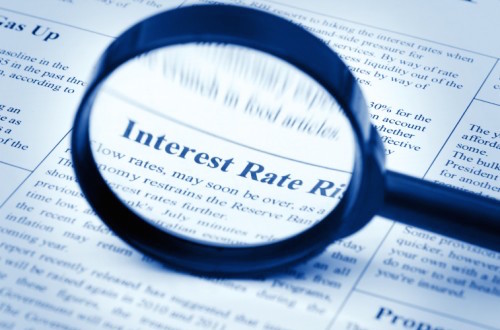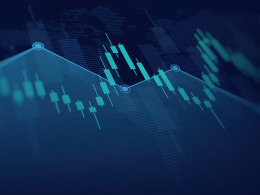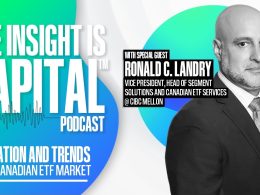High Yield: Could the 2008 Crisis Repeat Itself?
by Fixed Income AllianceBernstein
Does the recent stress in high yield mean we’re headed for another financial crisis? We don’t think so. The probability of anything happening in markets is never zero. But in this case, it’s pretty close.
We understand why investors are concerned. Memories of the global financial crisis are still fresh in all of our minds, and sharp sell-offs like the one high yield has endured are never pleasant. But in our view, the recent turmoil simply doesn’t compare to what happened in 2008.
Contagion vs. Containment
The 2008 crisis grew out of massive leverage throughout the financial system—notably at financial firms and federally insured banks. There was a real risk that the entire global banking system would grind to a halt. Repercussions were felt across markets and the world.
What’s happening now is different. The biggest problems are in a few commodity-dependent sectors, such as oil & gas, metals and mining. Companies in these sectors borrowed aggressively when commodity prices were high, only to find their margins squeezed and projects unprofitable when prices plunged.
Something similar happened in 2002, with telecom companies in the crosshairs. When the dot-com bubble burst, telecom defaults rose and the broader high-yield market suffered. But that set the stage for strong returns in the years to come, and those who invested in the nontelecom portion of the market over the next couple of years did well.
We wouldn’t be surprised to see things play out in similar fashion this time. Nonenergy-sector bonds are now more attractively priced than they’ve been in years, with yields above 8%. That’s important, because starting yield has been a pretty reliable indicator of what you can expect to earn over the next five years.
Be Choosy and Follow the Credit Cycle
Investors still need to be selective—even among the nonenergy-sector bonds that make up more than 80% of the high-yield market. High yield includes many sectors and regions, each in a different stage of the credit cycle.
Stripped of energy-sector bonds, the US high-yield market is still in the expansion stage—but it’s getting closer to contraction. Attractive values certainly exist, but investors have to do their homework to find them. Other sectors and regions, including Asian and Latin American corporates and US and European financials, are at different stages. Some may offer more attractive risk-reward trade-offs.
Avoid ETFs and Crowded Trades
Another pitfall to avoid: using exchange-traded funds (ETFs). Since their inception, high-yield ETFs have consistently underperformed active strategies. One reason for this is that these index-tracking instruments can’t pick and choose their exposures the way an active manager can. Buying an ETF means buying the entire high-yield index.
This is why so many investors over the last 18 months suddenly found themselves with such high exposure to energy-sector bonds. Over the last decade, oil & gas, mining and metals issuers went from about 5% of the market to nearly 20%.
In our view, an active, multi-sector approach that can exploit opportunities across sectors and geographies is the best defense against such overexposure. It should also help investors steer clear of crowded trades, a critical consideration in today’s liquidity-starved fixed-income markets.
Today’s investing environment isn’t an easy one. But what we’re seeing in high yield is a far cry from what happened in 2008. Things could get rough in the energy sector this year and will probably stay volatile in the wider market. But we think investors who take a broad, diversified approach to high yield and avoid the problem areas can put themselves in position to prosper.
The views expressed herein do not constitute research, investment advice or trade recommendations and do not necessarily represent the views of all AB portfolio-management teams.
Director—High Yield

Gershon M. Distenfeld is Senior Vice President and Director of High Yield, responsible for all of AllianceBernstein’s US High Yield, European High Yield, Low Volatility High Yield, Flexible Credit and Leveraged Loans strategies. He also serves on the Global Credit, Canadian and Absolute Return fixed-income portfolio-management teams, and is a senior member of the Credit Research Review Committee. Additionally, Distenfeld co-manages the High Income Fund and two of the firm’s Luxembourg-domiciled funds designed for non-US investors, the Global High Yield and American Income Portfolios. He has authored a number of published papers and initiated many blog posts, including “High Yield Won’t Bubble Over,” one of the firm’s most-read blogs. Distenfeld joined the firm in 1998 as a fixed-income business analyst. He served as a high-yield trader from 1999 to 2002 and as a high-yield portfolio manager from 2002 until 2006, when he was named to his current role. Distenfeld began his career as an operations analyst supporting Emerging Markets Debt at Lehman Brothers. He holds a BS in finance from the Sy Syms School of Business at Yeshiva University and is a CFA charterholder. Location: New York
Copyright © AllianceBernstein
















